Camille Claudel in 5 Sculptures
Camille Claudel was an outstanding 19th-century sculptress, a pupil and assistant to Auguste Rodin, and an artist suffering from mental problems. She...
Valeria Kumekina 24 July 2024
8 April 2024 min Read
In an astonishing first for Roma and Traveller people, a Romani artist has represented a national pavilion at the Venice Biennale 2022. Małgorzata Mirga-Tas presented a triumphant celebration of Roma life and history in a huge, brilliantly colored textile palace.
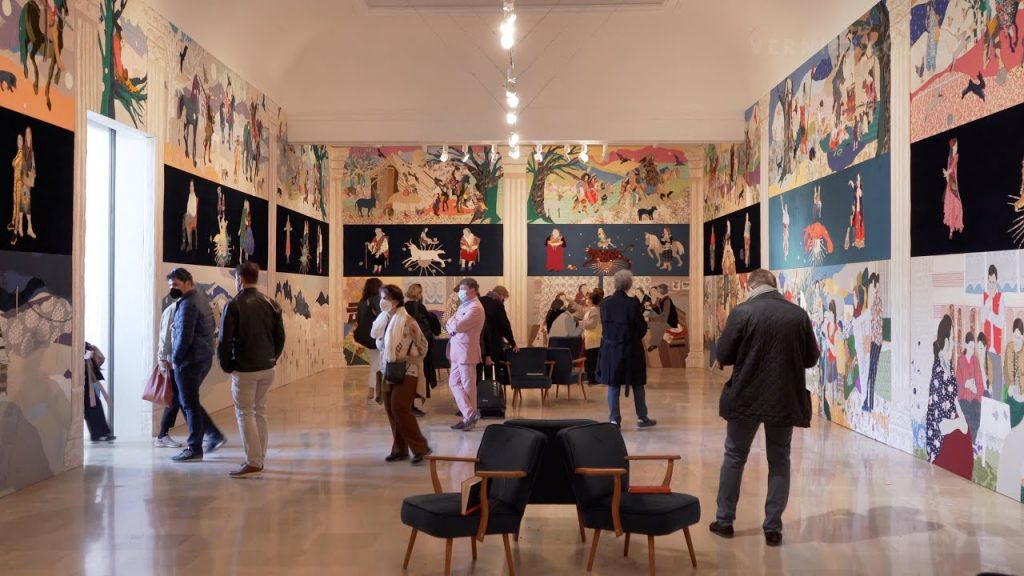
Still from the video Małgorzata Mirga-Tas, Re-enchanting the World, 2022, Venice Biennale, Venice, Italy. VernissageTV/YouTube.
For the first time in over 120 years, a Romani artist had been chosen to represent a country. Since 2007, the Roma pavilion had operated under the Romani flag, the flag of a borderless nation of travelers. In 2022 for the first time ever, Polish-Romani artwork was displayed under the insignia of a national flag, that of Poland.
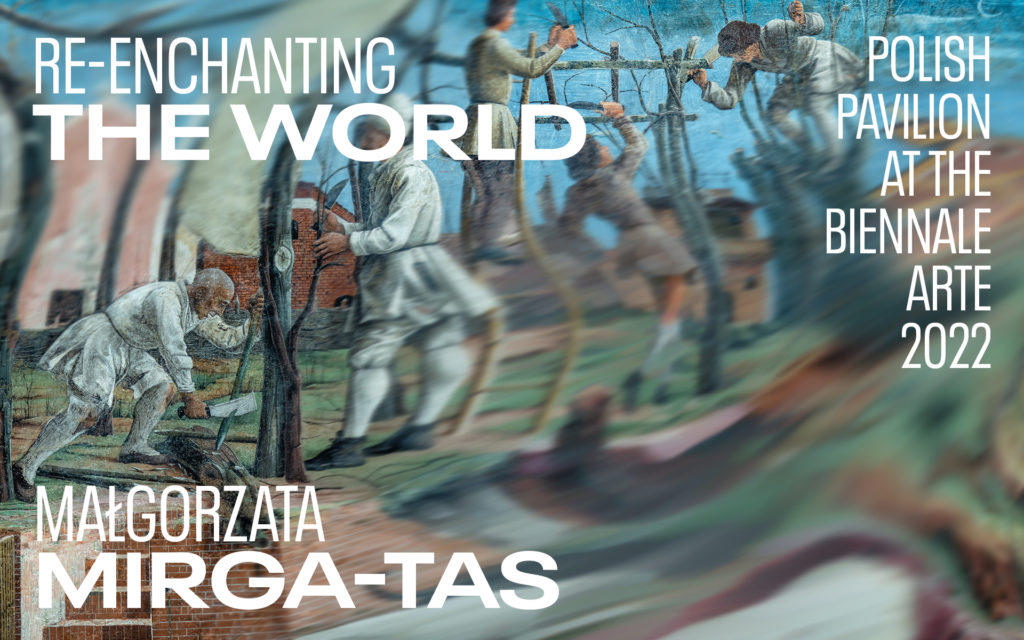
Małgorzata Mirga-Tas, Exhibition banner Re-enchanting the World, 2022, Venice Biennale, Venice, Italy. Biennale.art.pl.
Biennales are large-scale exhibitions of contemporary art, involving artists, museums, galleries, governments, and philanthropists. Essentially, it is a huge free-wheeling affair, packed full of exhibitions and events. The Venice event, the Biennale di Venezia, has been staged since 1895.
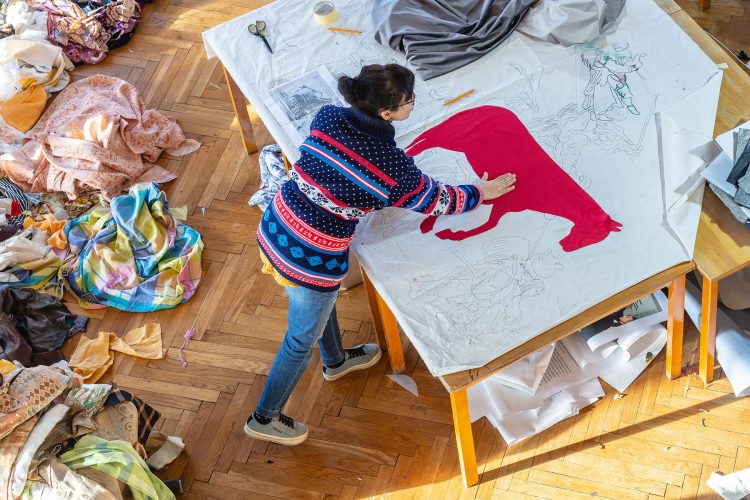
Małgorzata Mirga-Tas at work, 2022. Photo by Daniel Rumiancew. ERIAC.
This project was prepared specially for the Biennale, attempting to find a place for the Roma community in European art history. The Romani are Europe’s oldest and largest minority, numbering 12 million people spread across every country, with around 30,000 living in Poland.
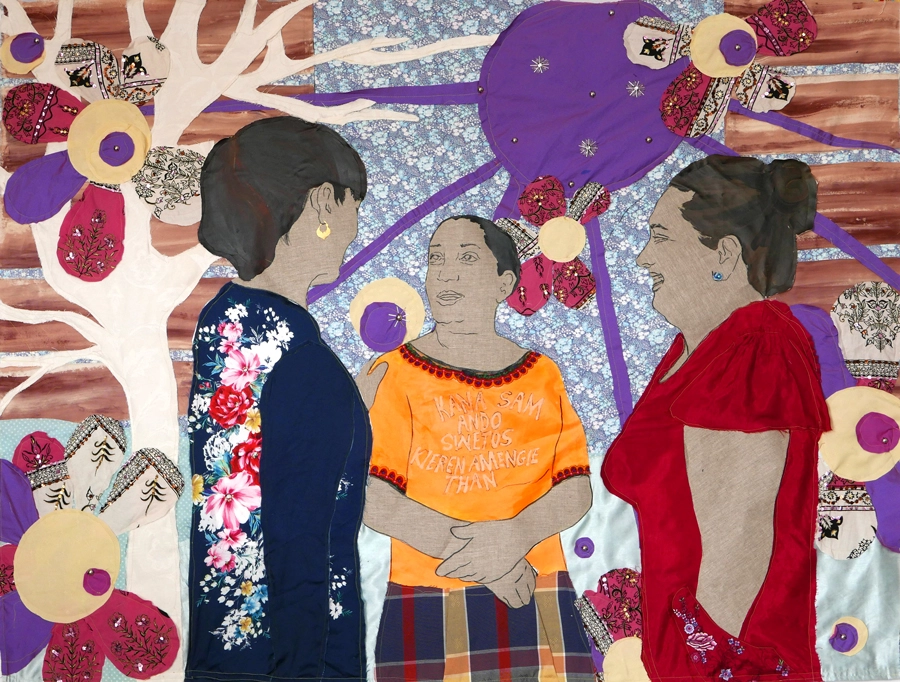
Małgorzata Mirga-Tas, Kana Sama Ando Swetos, 2020. Uncommongroundpl.
Małgorzata Mirga-Tas is a Polish-Romani artist, educator, and activist. She was born in Zakopane and studied at the Faculty of Sculpture at the Academy of Fine Arts in Krakow, Poland. Mirga-Tas works in paint, sculpture, and textiles. In her work, she challenges negative stereotypes of the Roma, and disputes anti-Roma sentiments, sadly very common across Europe.
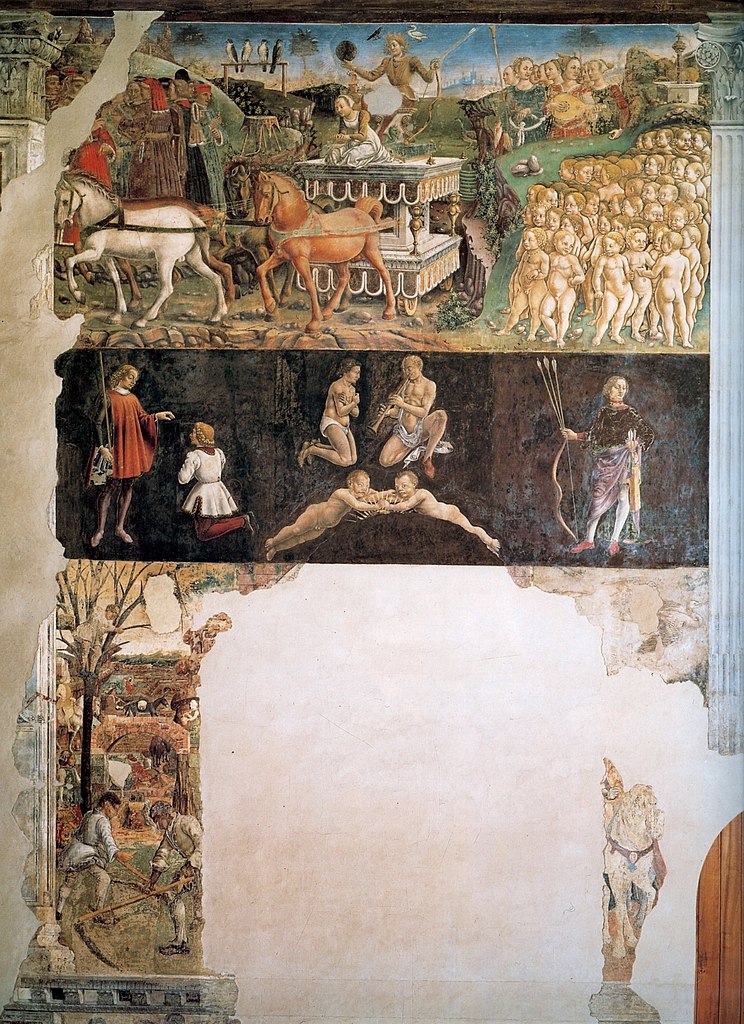
Francesco del Cossa, May Fresco, 1470, Palazzo Schifanoia, Ferrara, Italy.
The work is massive, falling ceiling to floor, with panels of vividly colored fabric. Three tiers of hand-stitched panels reconsider the 500-year-old frescos at the Renaissance Palazzo Schifanoia in Ferrara, Italy. The Room of the Months at Palazzo Schifanoia shows 12 astrological frescoes, corresponding with the turn of the year through the months. Mirga-Tas reinterprets this format to focus on her own people, who are almost entirely absent from Western art. 12 huge textile hangings, corresponding to the cycle of the year, echo the migration patterns of the Roma and Traveller communities. Mirga-Tas then inscribes these textiles with the specific history of the Polish-Romani. This is a manifesto on Roma identity, expressed through art.
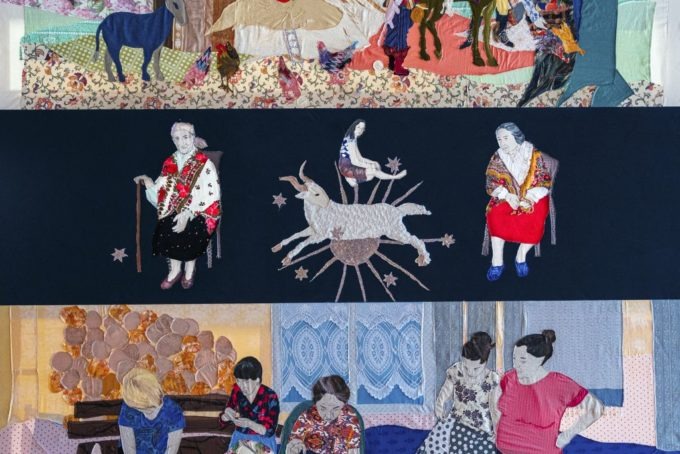
Małgorzata Mirga-Tas, Re-enchanting the World, 2022, Venice Biennale, Venice, Italy. Photo by Bartek Solik/ERIAC. Detail.
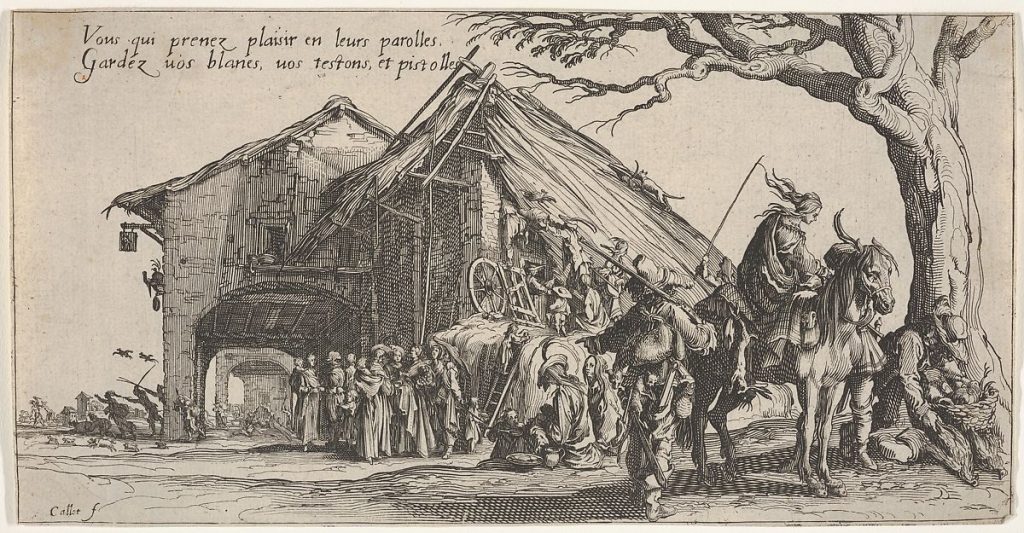
Jacques Callot, The Fortune Tellers, 1621, The Metropolitan Museum of Art, New York, NY, USA.
The upper band of the display shows the mythical journey of the Romani to Europe. They have been in Europe since the 14th century. Some images are based upon 17th-century prints by the French engraver, Jacques Callot. His works were disparaging of the Romani people. Mirga-Tas re-sets that bias, re-appropriating the imagery. She chooses realism and cultural appreciation over cultural appropriation.
The central band is a collection of Roma herstories (stories about women) combining images of real women with magic and astrology. The lower band depicts everyday life in Czarna Góra, in the Tatra mountains where the artist lives within a Roma community. Mirga-Tas offers us a narrative about the continuous cultural migration of images and mutual influences between Roma, Polish, and European cultures, where each is valued and vital.
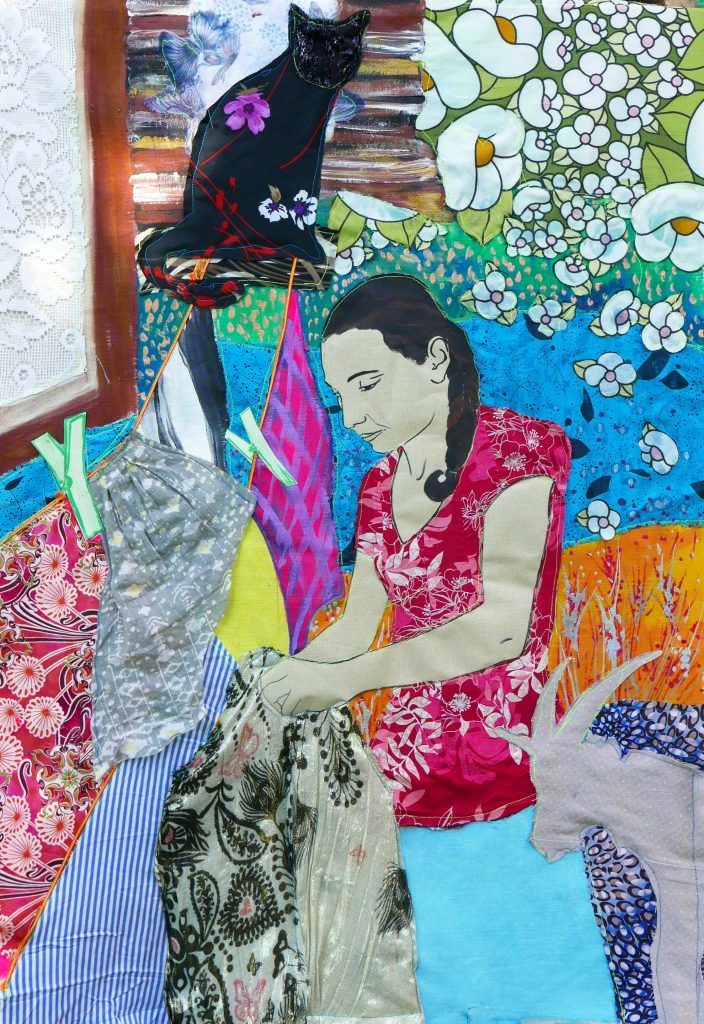
Małgorzata Mirga-Tas, Zakopane, 2021. Zakopane.pl.
The title of the exhibition was inspired by the book Re-enchanting the World: Feminism and the Politics of the Commons from 2018 by Silvia Federici. The book emphasizes the nurturing relationships between all living things and proposes a kinder, safer world where women play a central part.
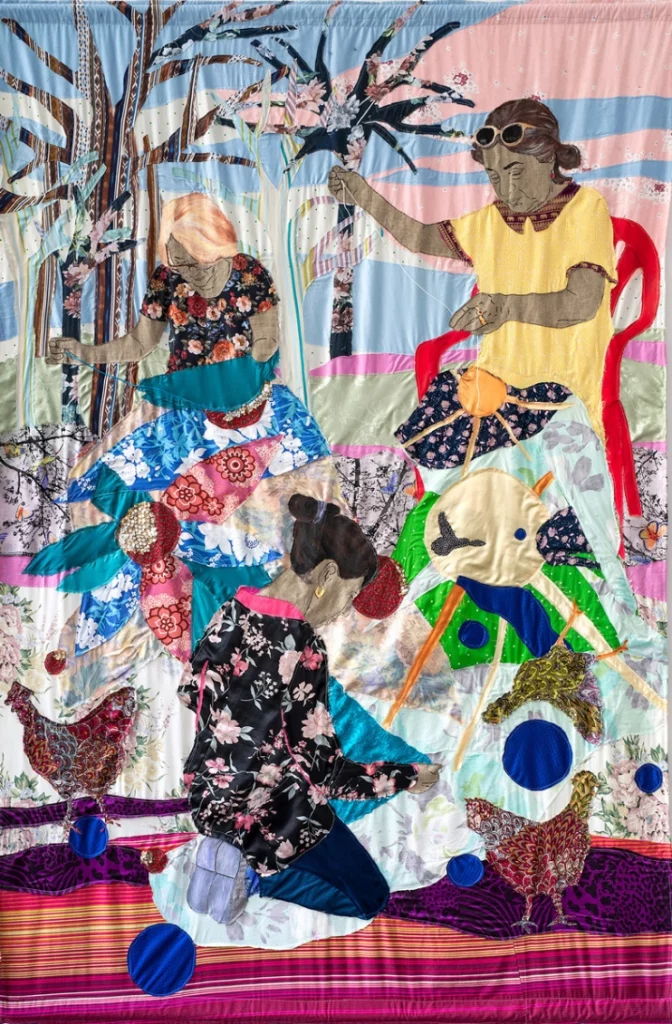
Małgorzata Mirga-Tas, Untitled, 2021. Irenebirnation.com.
In the life of every human being, there is a need for magic and enchantment. But not always, at certain moments, we should disenchant the world, moments, situations, negative emotions, and paradigms. Selecting a few topics related to the representation of Romani people in a stereotypical and stigmatizing way, I try to disenchant and demythologize them by reversing how we are being seen.
Re-enchanting the World. Edited by Wojciech Szymański and Joanna Warsza. Published by Zacheta National Gallery of Art, Archive Books and ERIAC, 2022.
Mirga-Tas’ artistic and activist practices are clearly grounded in Polish-Romani culture and especially relate to Romani women. Her works are often the products of collaboration with other women. She calls her textile work “patchwork”, but it is so much more than that. Traditionally women’s work, sewing, and stitching is both an art and craft and a historical legacy. This exhibition questions who decides what fine art and crafting are as well as what professions and necessities are.
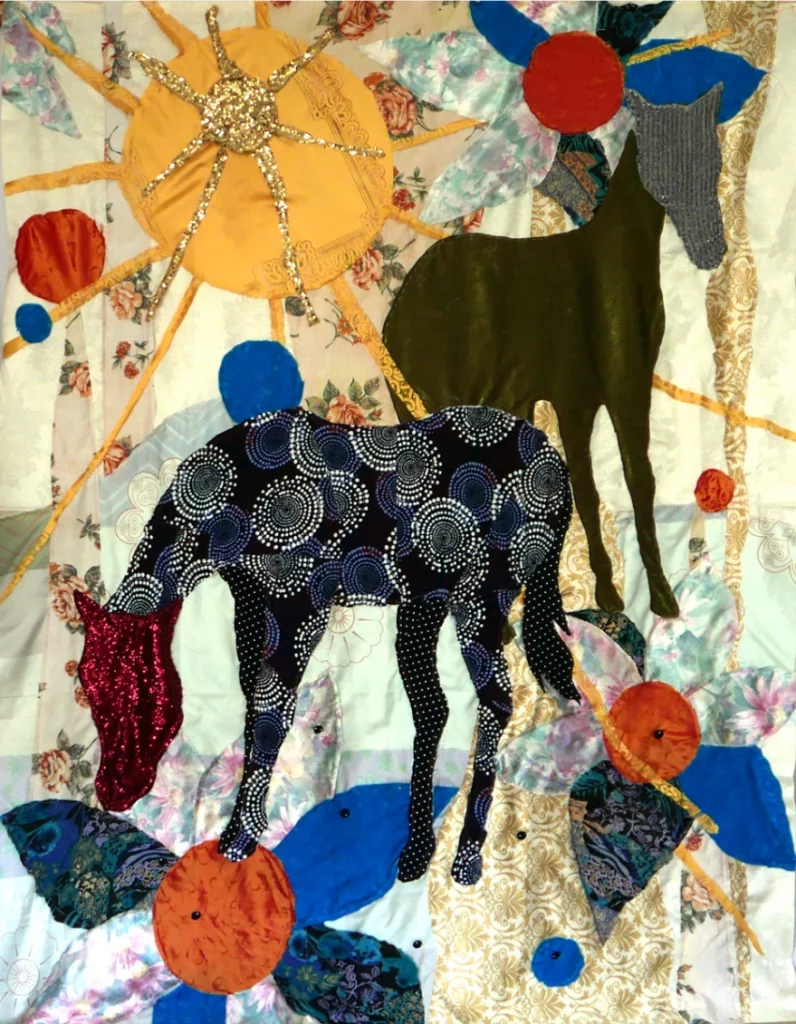
Małgorzata Mirga-Tas, Romane Graja, 2021. PismoFolkowepl.
The materials, clothing, and curtains from which I sew portraits are meant to give them additional energy and power. I have been collecting things given to me by women in my family, from Roma neighborhoods, and friends. Sometimes, I buy them in second-hand stores. . . I can see life in them; I see emotions and feelings. Portraits sewn from the clothes of these or other Romani women give them spirituality and magic.
Re-enchanting the World, 2022.
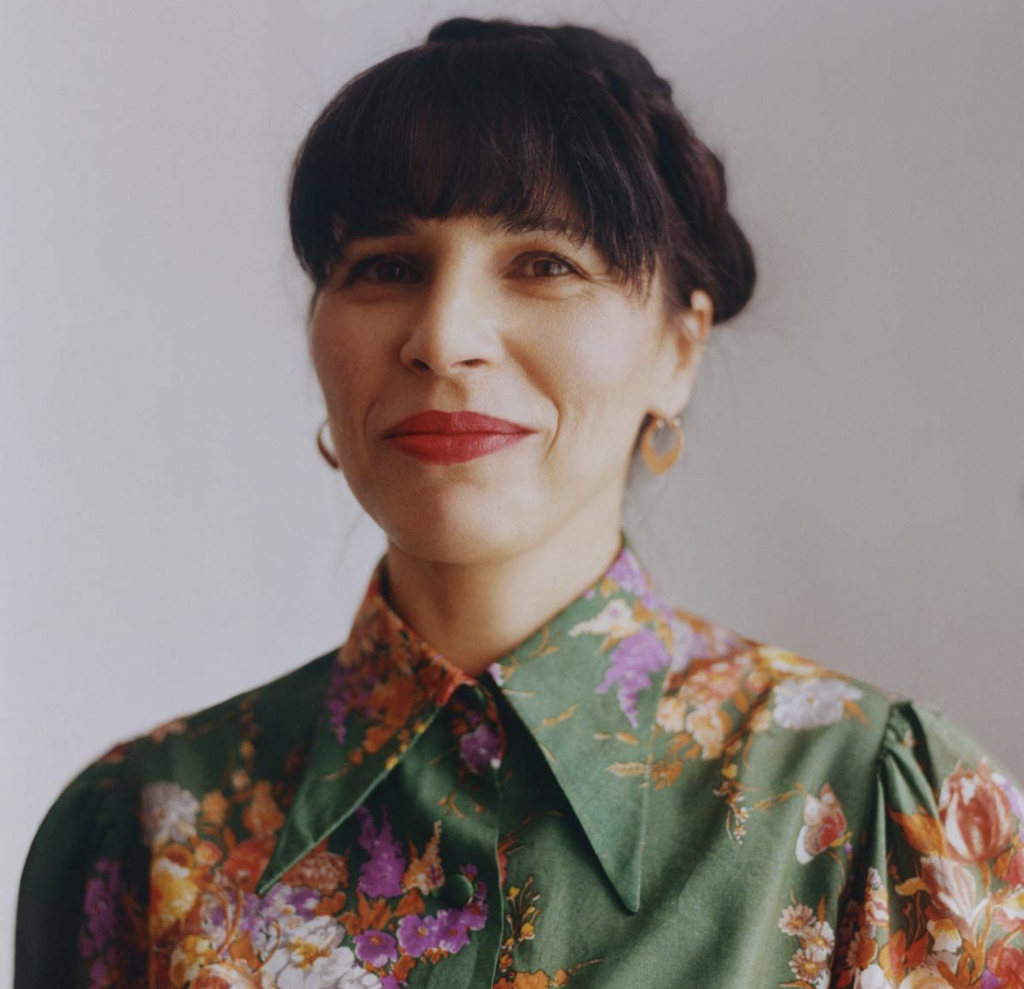
Małgorzata Mirga-Tas in 2022. Photo by Ina Lekiewicz. Culture.pl.
Mirga-Tas has built a palace and a refuge from scraps and discarded cloth. In this exhibit, we celebrate the strengths of the Romani people: adaptability, resourcefulness, and resilience, without falling into romance or nostalgia. She reminds us that recycling, repairing, and treasuring our shared human resources is the only sane choice in the face of destruction and oppression. Małgorzata Mirga-Tas reminds us that we must re-imagine and re-build our world with understanding and kindness.
For more on the artist, visit her website.
ERIAC is the European Roma Institute for Arts and Culture. It is an international creative hub for all things Roma.
DailyArt Magazine needs your support. Every contribution, however big or small, is very valuable for our future. Thanks to it, we will be able to sustain and grow the Magazine. Thank you for your help!